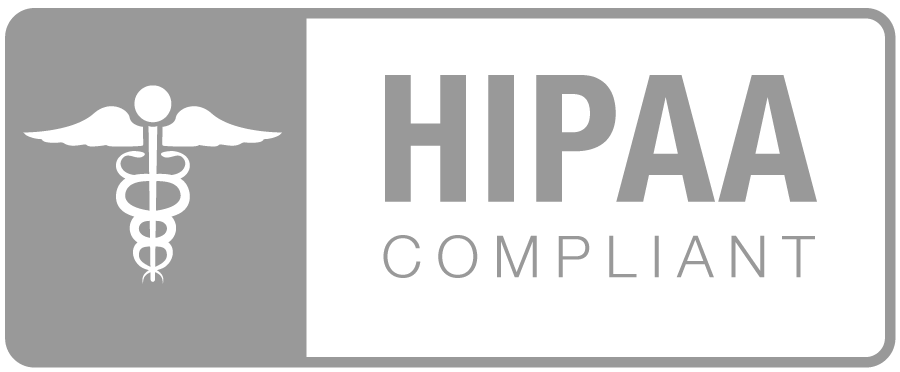The word “autism” was first coined in 1911 by a German psychiatrist who believed autism was a subtype of schizophrenia (spoiler alert: he was very, very wrong). Needless to say, the word has had a tumultuous history [1,9]. Throughout the decades, however, researchers and medical professionals have begun to better understand the inner world of a person with autism, and we have thankfully come to define it much differently today.
Presently, Autism Spectrum Disorder (ASD) can be described simply as “a neurological and developmental disorder that affects how people interact with others, communicate, learn, and behave” [13]. This definition is broad, of course, but with reason, as “ASD exists along a continuum of neurodiversity” and cannot be described by a single example [8].
Throughout the history of autism’s changing definitions, many different schools of thought have been established regarding Autism Spectrum Disorder’s cause, diagnosis, symptoms, treatment, and even the language used to describe it [1]. One of the complicating factors in defining and treating autism is the wide range of presentations and severity of symptoms that persist across its spectrum.
As ongoing research is conducted, professionals, family members, and people with autism all work to make the best decisions regarding healthcare and interventions for individuals in the autism community.
My goal in this article is to provide the reader with opportunities for learning more about Autism Spectrum Disorder (ASD). I do not seek to establish myself as an expert on the topic of autism or of its treatment. Instead, I write as someone curious about how to best point clients and families toward further resources and services. I invite you to join me in learning more about how to support and respect people with autism.
Note: To read more about my decision to use person-first language in this article, please refer to the second subtitle below, “Person-first or Identity-first language.”
What is Autism Spectrum Disorder and what does it look like?
Many of us probably have a mental picture of someone with autism. Maybe yours is a replica of a character you have seen in media, such as Dustin Hoffman’s depiction of real-life individual Kim Peek in Rain Man . Or maybe it is of a person that you once knew in school, at church, or as a family friend. Regardless, each of us probably has some sort of connection to a person with autism. These experiences understandably shape our understanding of what autism can look like, but our personal experiences alone do not encompass the spectrum as a whole. What we think autism looks like based on our own limited experiences is only a drop in the bucket.
Most likely your interactions with adults with autism are much higher than you even realize. Recent CDC estimations identify that approximately 2.21% of adults in the United States have autism [3]. Was your mental picture a child? Mine was! But we often forget that ASD is a lifelong diagnosis that often continues to require support and intervention in various forms.
Let’s begin with some quick facts about Autism Spectrum Disorder (ASD):
- Can appear before or around the age of 2 [5, 8].
- Often marked by the following observable symptoms [13]:
- Difficulty with developmentally appropriate social interactions
- Repetitive behaviors
- Hyperfocus on certain interests
- Symptoms impede normal functioning at school or work to varying degrees
- A wide array of treatments exists and can be tailored to the individual and their families [6]
The symptoms listed above cast an incredibly wide net; they are generalizations of specific behaviors that may exist for a person with autism. To read more about what specific symptoms may persist in yourself or a family member, I suggest checking out these resources below. But as always, remember that no online checklist is a replacement for speaking with a professional who can offer individualized support.
- CDC: Signs and Symptoms of ASD
- CDC: Developmental Milestones
- CDC: Milestone Checklist
- M-CHAT-R Autism Screening Tool
- National Institute of Mental Health
- The Mayo Clinic
Person-first versus Identity-first language
In the professional community we make a point to use what is called “people first” language about a diagnosis or disorder that a person may have. People-first language, for example, would be to use the phrase “people with substance abuse” instead of “an addict.” This is a subtle but powerful way to avoid identifying a person by their struggle or diagnosis. It emphasizes their inherent personhood. In this article I use person-first language to respect this stance.
Within the autism community, however, there is great debate as to whether person-first or identity-first language is preferred [2, 10]. For example:
Person-first language: a man with autism
Identity-first language: an autistic man
On one hand, some people believe that autism is a key part of their identity, and since it is not a disease to be cured or a disorder to be ashamed of, they welcome the identity-first language.
Others, however, prefer person-first language to identify that they are so much more than their autism.
While someone untouched by the world of autism may feel like this distinction is nothing more than splitting hairs, we must remember that language is a powerful tool that ultimately shapes what we believe about a topic. The reduction of stigma often begins with the way we communicate.
My advice is to let a person who is autistic take the lead on this topic. If you are acquaintances with an adult who feels safe enough with you to share that they have a diagnosis of ASD, then I gather that they would most likely be comfortable with you asking if they prefer person-first or identity-first language. If nothing else, the conversation can also offer an opportunity for that person to talk about a part of themselves that others in their life may avoid mentioning altogether.
How to seek a diagnosis?
Who do I talk to if I am concerned my child has autism?
The best way for parents of children curious about a potential autism diagnosis is to make sure that your pediatrician is conducting developmental monitoring and screening. This essentially means that your regular pediatrician is asking pertinent developmental questions at each well-visit to ensure that your child is meeting milestones. The links to resources listed in the section above can guide you to a list of these milestones.
Yet, remember that you are your child’s best advocate! If you feel uneasy and want to ask extra questions, do not wait for your doctor to raise the topic of a certain milestone. Go ahead and ask about it! You know your child best and have a wealth of knowledge about his or her day-to-day behaviors and functions that your doctor may not be aware of.
Monitoring and screening tools, however, are not tools for direct diagnosis. Instead, these are resources that can be used to determine if it would be beneficial for your child to meet with a specialist who is trained in the diagnosis and treatment of autism.
What will the specialist do?
Most likely, this specialist will conduct a formal evaluation to screen for not only Autism Spectrum Disorder (ASD), but for other disorders that could be at play. The specialist conducting the evaluation should also be able to point you towards specific modalities for support, including local resources that could be a good fit for your child’s needs.
What is a formal evaluation?
Formal evaluations encompass a variety of methods of information-gathering to make sure that the most well-rounded picture of your child’s experience is being considered before any formal diagnoses are reached. Your specialist will not only be looking for the challenges presenting in your child’s life but will also be identifying their strengths. This will be helpful in moving forward with choosing services and programs that will best serve your child.
Autism is not diagnosed with a quick medical exam or test, which initially makes the process feel a little cumbersome and daunting for some families. A formal evaluation considers behaviors, overall functioning, communication, emotional regulation, social background and family history, developmental milestones (and more) to make a formal diagnosis.
But a positive benefit to this way of receiving diagnosis is that, through the process, the professional that you are working with will be going to great lengths to best understand your child (or yourself, if you are an adult). A quick blood test or medical exam could never accomplish this feat!
Reasons to seek diagnosis early
Seeking information about a potential autism diagnosis may feel scary, but early intervention is of paramount importance. Even if your child does not receive a diagnosis of autism, there could be other concerns with sensory issues, executive functioning, or developmental delays that also need to be addressed as early as possible. Evaluations can bring these things to light to help you support your child in a tailored manner.
Diagnoses are not meant to label a child just for labeling purposes or to ostracize, but to offer an avenue of education and intervention to help a child function socially, educationally, and emotionally in a way that is most supportive for themselves and for the family as a whole.
“A growing body of evidence supports the value of early diagnosis and treatment with evidence-based interventions, which can significantly improve the quality of life of individuals with ASD as well as of their carers and families” [8].
What happens after a diagnosis?
With so many presentations of Autism Spectrum Disorder (ASD), there is no way to expect a singular intervention to benefit every person with ASD. Most families and individuals, with the help of their professionals that conduct the formal evaluation, pursue services that make the most sense for the challenges and strengths that they directly face.
A host of treatments and therapies exist to help people with autism function more freely and confidently in daily life. These can include medications, behavioral or psychological therapies, physical or occupational therapy, educational support, individualized or group therapy, and more [13]. Many of these treatments focus on behavior management and the development of interpersonal skills to assist a person in better functioning in his or her everyday social and academic/ work environments.
Finding services that are the best fit is not always a straightforward process; not to mention, a person’s treatment needs can change with each stage of development. This is why early diagnosis and intervention is incredibly important [8].
If you are seeking answers about your child or yourself in regard to autism and do not have a current pediatrician or primary care physician, a good DFW resource to contact is the University of North Texas’ Kristin Farmer Autism Center. They offer a variety of services to help you begin the process of better understanding and supporting your child or yourself.
Finally, don’t fret!
An autism diagnosis (or any diagnosis, for that matter) does not change who your child is at their core. It is a way for your child to be able to receive ample support in areas that are challenging, and to better understand his or herself.
Diagnoses are tools, not labels.
Diagnoses exist to help the people who have them make sense of their worlds and capitalize on their strengths with a little help from people who are trained to do so.
Resources:
1. Autism in the DSM. The Autism History Project. (n.d.). Retrieved March 3, 2023, from https://blogs.uoregon.edu/autismhistoryproject/topics/autism-in-the-dsm/
2. Callahan, M. (2018, July 12). Unpacking the debate over person-first vs. identity-first language in the autism community. Northeastern Global News. Retrieved March 4, 2023, from https://news.northeastern.edu/2018/07/12/unpacking-the-debate-over-person-first-vs-identity-first-language-in-the-autism-community/
3. Centers for Disease Control and Prevention. (2022, April 7). Key findings: CDC releases first estimates of the number of adults living with autism spectrum disorder in the United States. Centers for Disease Control and Prevention. Retrieved March 4, 2023, from https://www.cdc.gov/ncbddd/autism/features/adults-living-with-autism-spectrum-disorder.html
4. Centers for Disease Control and Prevention. (2022, December 29). CDC’s Developmental Milestones. Centers for Disease Control and Prevention. Retrieved March 3, 2023, from https://www.cdc.gov/ncbddd/actearly/milestones/index.html
5. Centers for Disease Control and Prevention. (2022, March 28). Signs and symptoms of autism spectrum disorders. Centers for Disease Control and Prevention. Retrieved March 3, 2023, from https://www.cdc.gov/ncbddd/autism/signs.html
6. Centers for Disease Control and Prevention. (2022, March 9). Treatment and intervention services for autism spectrum disorder. Centers for Disease Control and Prevention. Retrieved March 3, 2023, from https://www.cdc.gov/ncbddd/autism/treatment.html
7. Default – Stanford Medicine Children’s health. What Is Autism Spectrum Disorder? (n.d.). Retrieved March 4, 2023, from https://www.stanfordchildrens.org/en/topic/default?id=what-is-autism-spectrum-disorder-160-23
8. Elder, J., Kreider, C., Brasher, S., & Ansell, M. (2017). Clinical impact of early diagnosis of autism on the prognosis and parent-child relationships. Psychology Research and Behavior Management, Volume 10, 283–292. https://doi.org/10.2147/prbm.s117499
9. Evans, B. (2013). How autism became autism. History of the Human Sciences, 26(3), 3–31. https://doi.org/10.1177/0952695113484320
10. Identity-first language. Autistic Self Advocacy Network. (2011, August 4). Retrieved March 3, 2023, from https://autisticadvocacy.org/about-asan/identity-first-language/
11. Mayo Foundation for Medical Education and Research. (2018, January 6). Autism spectrum disorder. Mayo Clinic. Retrieved March 4, 2023, from https://www.mayoclinic.org/diseases-conditions/autism-spectrum-disorder/symptoms-causes/syc-20352928#:~:text=A%20child%20or%20adult%20with%20autism%20spectrum%20disorder,ability%20to%20say%20words%20or%20sentences%20More%20items
12. Timeline- The autism history project. The Autism History Project. (n.d.). Retrieved March 3, 2023, from https://blogs.uoregon.edu/autismhistoryproject/timeline/
13. U.S. Department of Health and Human Services. (2023, February). Autism spectrum disorder. National Institute of Mental Health. Retrieved March 4, 2023, from https://www.nimh.nih.gov/health/topics/autism-spectrum-disorders-asd




